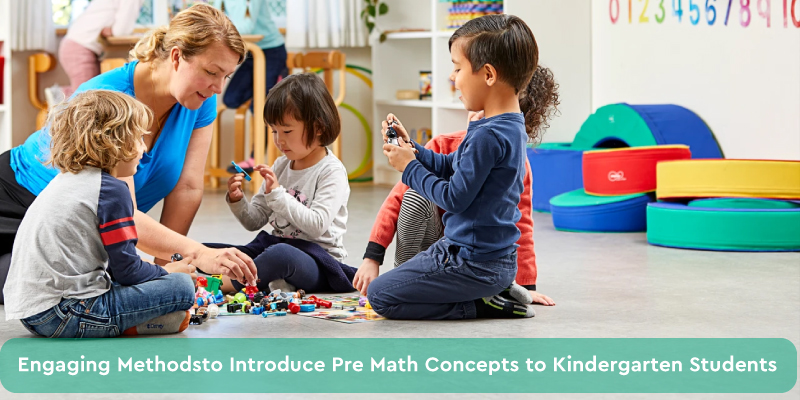Pre-Kindergarten and Kindergarten are stages when children begin to explore the world. A sense of curiosity seems to reflect in their personalities as they want to make sense of everything they see, touch, and feel. As a Kindergarten educator, it is important to support and stimulate the child’s thirst for knowledge, by introducing fun & playful lessons in class. One such interesting concept is of ‘distance’ because understanding spatial relationships is a foundational skill for navigating their world. This blog explores effective strategies to teach the concept of ‘distance’ to Pre-K & K students, ensuring the lessons are both educational and enjoyable. Integrating these strategies supports the development of pre-math concepts for kindergarten students.
Strategy 1: Using Visual Aids and Manipulatives
Visual aids and manipulatives are powerful tools in early childhood education. For teaching distance, these can include:
- Measuring Tapes and Rulers: Simple, colorful measuring tapes or rulers can be introduced to show how distance can be measured. Children can use these tools to measure objects in the classroom or even decode their own height.
- Blocks and Building Materials: Using blocks or building materials, children can build structures and measure the distances between them. This can be incorporated into playtime, making learning seamless and enjoyable.
Strategy 2: Incorporating Movement and Games
Movement-based activities and games are excellent for teaching distance to young children. Here are a few ideas:
- Obstacle Courses: To reinforce pre-math concepts for kindergarten students, arrange cones at irregular intervals in the classroom and create an exciting indoor obstacle course. Now include words like ‘near’ and ‘far’ as children move around collecting cones.
- Measuring Footsteps: Encourage children to measure distances using their footsteps. They can count how many steps it takes to reach different points in the room or playground. This activity not only teaches distance but also integrates counting skills.
- Distance Races: Organize simple races where children have to run or walk certain distances. Mark the starting point with a chalk and the finishing point with a tape. Now invite students to discuss the distances involved between these two points.
Strategy 3: Storytelling and Interactive Read-Alouds
Pre-math concepts for kindergarten students can be brought to life through the magic of storytelling! Select stories that involve characters traveling distances, such as journeys or adventures. During read-aloud sessions, use props or visuals to illustrate the distances covered by the characters.
Strategy 4: Everyday Situations and Practical Examples
Incorporate discussions about distance into everyday classroom activities:
- Classroom Layout: Talk about the distances between different areas of the classroom, such as the reading corner, art station, and play area. Encourage children to think about and describe these distances.
- Nature Walks: Take the children on nature walks around the school grounds. Discuss the distances traveled and use simple maps to illustrate the routes taken.
- Comparative Language: Use comparative language to discuss distance, such as “closer,” “farther,” “longer,” and “shorter.” For example, compare the distance between their desks and the door or the playground and the classroom.
Strategy 5: Technology Integration
While hands-on activities are crucial, technology can also enhance learning about distance:
- Interactive Apps: Utilize age-appropriate educational apps that introduce the concept of distance through interactive games and activities.
- Digital Stories and Videos: Show short videos or digital stories that involve characters traveling distances. Follow up with discussions and questions about the distances covered.
- LEGO® Education Coding Express: The Coding Express Set offers an optional, tech-infused approach to learning distance. This playful set allows students to program the movement of a train based on distance. By building tracks and assigning distances between stops using the app’s interface, children can experiment with moving the train to various lengths. This interactive experience reinforces their understanding of distance in a fun and engaging way.
Teaching pre-math concepts for kindergarten students requires a blend of visual aids, hands-on activities, movement, storytelling, everyday examples, and technology. By creating an engaging and interactive learning environment, educators can help young children develop a foundational understanding of distance. This exercise not only teaches children about spatial awareness but also instills a sense of confidence among them. Try some of the above-listed activities to get started and guide young learners to understand important pre-math concepts and abstract ideas.






Recent Comments